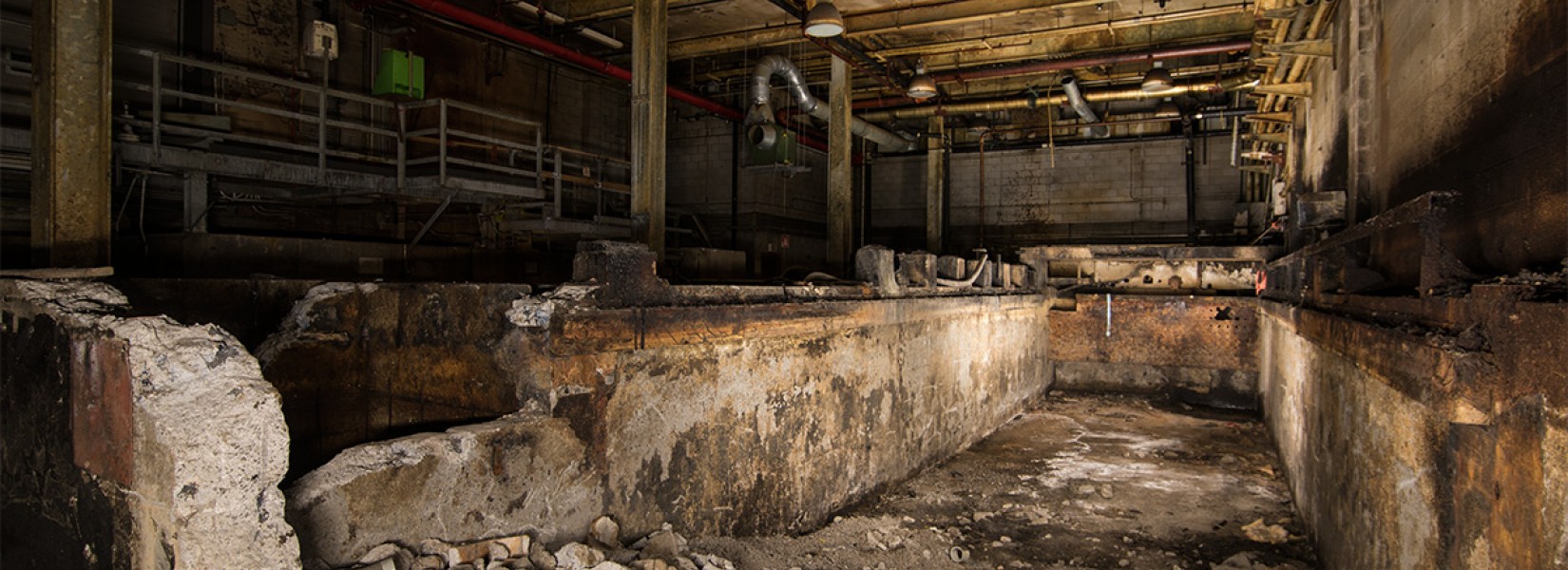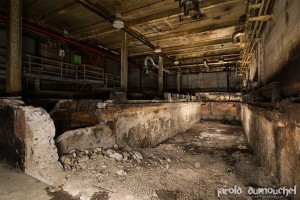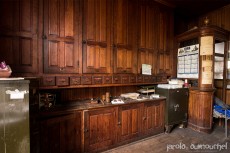The history of the Babcock & Wilcox in the Galindo valley began during the First World War when the difficulties of the Compañía de los Caminos de Hierro del Norte de España will result in the sale of the plant to the Babcock & Wilcox...
The old vegetable oil plant
Four-storey skating rink
It can not be said that the place is in a good shape. The water infiltrates through every small hole in the roof to the point of offering on this cold winter night a skating rink on each floor. Moreover, the ice must make more than eight centimeters thick.
On the first floor, the walls bear the traces of a fire that seems to have broken out in the old part of the factory. Outside light permeates through the holes in the sheet metal and rare graffiti adorn its walls. With a value of more than $ 8 million, it is guessed that the inspector's last visit dates back several years.
The company, which was in bankruptcy in 2012, seems to have abandoned it for quite some time. The machinery was extirpated from the building, probably sold to pay off the debts of this old vegetable oil plant.
Today, the legal owner is a real estate business founded one year before the previous owner's bankruptcy and whose name is the civic address of the place. This "new" company is itself owned by three other companies specializing in holding companies and mutual funds.
One can therefore guess that its current owners must be fortunate enough to wait for the right moment to resell their building with the benefit they deem appropriate. Until then, it will not be today that the roof will ceases to flow.
Related content
This is the story of the saw manufacturing industry where methods have not changed for decades. The result is this building that has certainly been enlarged over the years, but the interior has retained its old-fashioned charm. You should know...
Used as a snow dump, the site of the former Francon quarry (now known as the Saint-Michel quarry) looks like a huge crater of greenery in the heart of Montreal. This area covers approximately 20% (17% to be exact) of the district of Saint-Michel...
Heavily damaged by the time, the old copper mine is closed for several years. While its lower floors are completely flooded with muddy and stagnant water, the ground floor was, meanwhile, weakened by a sedimentary rock ceiling that collapsed in...




















